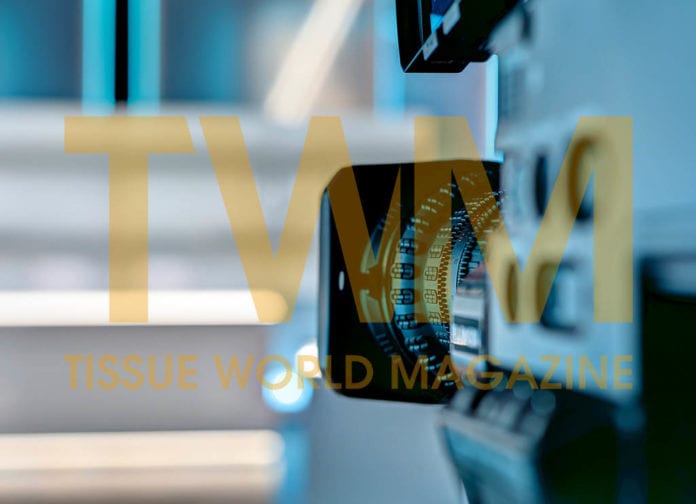Increased customer sophistication, sustainability, e-commerce, innovation, multiculture, aging population, decline in household income, slowing population growth, convenience, increased global logistics… the launch of the Tissue Retailers and Distributors Insight Forum (TRIF) at Tissue World Americas 2014 gave a deep and broad insight into critical drivers of an enterprise that touches nearly everyone in the world.
LYDIA WORK, PRESIDENT AND FOUNDER, AMERICAN PAPER CONVERTING, USA
How the Away From Home (AFH) Tissue Business is Changing and Why
“The towel and tissue industry continues to be a vibrant, growing enterprise literally touching nearly everyone in the world. One third of all T&T products reach consumers through the very fragmented AfH market. Health care, contract cleaners, industrial and educational market segments accounted for 57.7% of AfH sales. A 2013 ISSA/SM sanitary supply study revealed janitorial distribution sales of $24 billion and annual growth of 2%. The growth in the market can be attributed to sales increases in restrooms’ consumables such as soaps, sanitisers, facial tissue and towels. Towels, facial, bath tissue and napkins continue to be the leading product category by sales volume.
“The industry continues to be very competitive, with customers becoming more sophisticated in their use of a vast electronic data base in decision-making. “Cleaning for Health”, “Sustainability”, and “Product Differentiation” are the leading trends in today’s marketplace. Touchless systems for faucets, soap and paper dispensers and doors are becoming commonplace. How are these changes and trends impacting T&T manufacturers and convertors?”
THE WORLD WE LIVE IN – US STATISTICS
The US Centre for Disease Control and Prevention estimate 1 in 20 patients in US get nosocomial (hospital-acquired) infection causing 90,000 deaths.
Two million people became ill last year.
The cleaning industry reported 21,500 recordable injuries in 2010 resulting in 84,000 lost days and $5.8 million in lost dollars. Cleaning budgets are still being cut.
SUMMARY
Distributor sales grew 1.7% from 2010 to 2012. Sales now total $24 billion.
Health Care, industrial, contract cleaners and educational market segments accounted for 57.7% of distributor sales in 2012.
Towels, facial tissue, toilet tissue continues to be the product that sold the most by dollar volume.
Sustainability – demand for recycled products continues to grow but consumer is not willing to pay more and expects product performance.
Product differentiation.
Cleaning for health – touchless and controlled dispensing.
Distributor Sales (market segment): Main Sectors
14.9% – healthcare
14.6% – industrial
14.5% – contract cleaners
13.7% – educational
8.4% – governmental
7.9% – retail
6.6% – restaurants/clubs
Distributor Sales (volume)
Distributor sales grew 1.7% from 2010 to 2012. Sales now total $24 billion.
54.4% – paper/plastics
27% – chemicals
8.1% – supplies/accessories
7.1% – power equipment
3.4% – other
Reference – Report on 2012 Sanitary Supply Distributor Sales Sanitary Maintenance magazine and ISSA .
ROLF SKAR, FOREST CAMPAIGN DIRECTOR, GREENPEACE, USA
Making peace with Greenpeace in the tissue business; the business case for sourcing responsibly

10. Greenpeace.
9. Consumers will hate you if you don’t.
8. Your competitors are doing it.
7. Your employees will hate you if you don’t.
6. Environmental disruptions.
5. Reliable fibre supply.
4. Legality.
3. Legacy.
2. It’s not that hard.
1. You don’t have a choice!
TODD HALE, SVP-CONSUMER AND SHOPPER INSIGHTS, NIELSEN, USA
Evolving consumer and retail trends and the implications for retail tissue channels

KEY FINDINGS
US population grew by just 0.72% in the year ended 1 July 2013- the slowest growth rate since 1937. In 2012, the incomes of the top 1% rose nearly 20% compared with a 1% increase for the remaining 99%. Value stays as income goes.
Decline in median household income in nine of last 13 years.
KEY CONCLUSIONS
2014 will not be easy: financial headwinds, stagnant wages andslowing population growth will continue to limit spending power.
Pocketbook pressures: fixed expenses force some families to reduce household, food and discretionary spend.
What is the spending power risk or opportunity for your shoppers or consumers?
Winners will: Win the trip: through superior shopper or consumer connection, innovation and/or operating excellence.
Retailing at the extremes: drives store expansion and product innovation efforts.
Capitalise on meal trends: snack and meal blurring, convenient fresh/ healthy perceived offerings, ethnic/ specialty products and quality semiscratch cooking options.
At-home time: opens opportunities for non-edible products too – brings about a closeness that should translate into sales for products that keep our households, our bodies and our pets fresh!
JAMIE ROSENBERG, GLOBAL HOUSEHOLD ANALYST, MINTEL, USA
Changing the demographics: old gold

This presentation looked at consumer research showing that consumers are rapidly changing their thinking about innovation in these categories to the point where they view premium features like strength, thickness and softness as value-added, and more times than not, worth the money. It also evaluated how mega-trends like health and wellness, aging populations, e-commerce, automation and globalisation point to a changing market.
The bigger opportunity for driving growth across the entire category revolves around new products that bring performance enhancements
KEY TRENDS SHAPING HOUSEHOLD PAPER INNOVATION:
• Consumers are associating quality with economy.
• Thicker paper saves money because you don’t need to use as many.
• Tissue paper strength growing as a key claim
• Paper towels are growing functional benefits
• Changing demographics: old gold
• 50% of babies born in industrialised nations
• Men are living 11 years and women 12 years longer than 40 years ago.
• We will have to work for longer; to the age of 70 in Europe.
• Seniors are working beyond retirement for money or pleasure.
• Long-term: home automation may threaten the towel market.
• Whether retired, working or in need of care, the elderly are the key consumer demographic
• Younger consumers buy less but tend to go premium.
• Value brands can backfire when consumers are leaving the category.
SOILE KILPI, DIRECTOR, PÖYRY MANAGEMENT CONSULTING, USA
Shipping air: how and why can foreign competitors thrive in North America

Tissue: global production and consumption
The global tissue market is over 30 million tonnes. North America is the largest market while China’s production and consumption have increasingly grown and are now at the same level as western Europe.
Tissue trade flows: parent rolls at two million tonnes
Trade is most active within Asia, between US and Canada and between the European countries.
World trade of tissue parent rolls: continued growth?
Global imports and exports of tissue have increased over 5% over the past 20 years. What are the future scenarios? Stagnation vs. growth.
Parent rolls: imports to North America increasingly from emerging countries.
Indonesia took share rapidly late 2000s and built a position in North America.
Go-to market approach: parent rolls.
• Long distance parent rolls – South East Asia supply
– Virgin fibre-based
– From a mill in coastal area
– Captive converting in target country, state-of-the-art – for private label and AfH
• Captive deliveries– trade with Mexico
– Recovered fibre and virgin fibre based
– Close to US/Mexican border, potential import/export of goods within company
• New developments
– Parent rolls from Turkey and China
Finished tissue products: China in the lead
China has held a solid market position with converted products in North America.
CONCLUS IONS
Tissue parent rolls (two million tpy) and finished products (four million tpy) trade has grown globally.
USA is the major importer and Asia has quickly gained share as an exporter. Overall trade is very fragmented and multiple countries import and export.
Trade can be expected to increase.
Parent rolls and finished products shipments have steadily grown to the USA. Focus on conventional tissue and virgin/ alternative fibres. Newer assets and access to low cost fibre – support export growth from select emerging markets.
Relatively high shipping costs but lower manufacturing costs with integrated concepts – mitigate shipping costs.
Producers have different strategic approaches to growth. Securing domestic business, entering new markets, exporting. Local/regional overcapacity mitigated by exports.
ESKO UUTELA, PRINCIPAL, TISSUE, RISI, GERMANY
New tissue supply in the Americas and impact on supply/demand balance

“Latin America has also shown strong expansion in recent years with Brazil as the leading force. New projects have emerged as mushrooms after heavy rain, and more plans are in the pipeline. But typical to Latin America, many projects have been delayed, moved to the backburner and some even cancelled, which has helped the supply/demand balance.”
Tissue consumption in the Americas by main country, 2012
USA – 64.5%
Brazil – 8.8%
Mexico – 8.1%
Canada – 6%
Argentina – 2.5%
Columbia – 1.7%
Chile – 1.6%
Venezuela – 1.3%
Peru – 1.1%
All others – 4.3%
North American tissue market growth has slowed down in the past five to six years; focus on product value, lightweighting cutting volume growth. Average growth 1.2% per annum.
Latin American tissue market shows varying annual but positive trend growth; economic turbulences and political instability causing problems. Average growth 4.7% per annum.
Volume growth of Latin American tissue consumption by main country, 2002-2012
Brazil – 410 thousand tonnes
Mexico – 260 thousand tonnes
Argentina – 140 thousand tonnes
Capacity shares of the main North American tissue suppliers, 2013 (end of the year). Top three players account for close to 60% and top 10 90% of capacity:
G-P – 29%
P&G – 15%
K-C – 15%
Cascades – 7%
SCA – 6%
Clearwater – 6%
Kruger – 4%
FQT – 3%
Irving – 3%
Wausau Paper – 2%
All others – 10%
The largest tissue suppliers in Latin America, 2013 (end of the year).
K-C is clearly dominant due to Mexico, but CMPC has expanded very aggressively in recent years with continuation expected.
Recent growth of tissue converters in North America (incl. partly integrated).
Tissue converters are a major factor in the North American tissue business, in the AfH sector in particular. A substantial part of their volumes is sub-contracting to larger suppliers.
US Tissue import developments, 2003-2013
Tissue imports have grown at an average rate of 4.3%/a, parent roll imports by 3.0%/a, converted product imports by 5.3%/a.
North American tissue market is maturing and the supplier focus has moved from volume to value. Product lightweighting is a major phenomenon and market growth should be measured in terms of product area and value rather than weight.
• Latin America is in an interesting development phase and tissue consumption shows strong growth in several large countries, Brazil in particular.
• There are surprisingly many tissue expansion projects under consideration in North America, including plans by tissue converters, graphic paper companies and totally new entrepreneurs. In the light of currently committed projects supply and demand are rather well in balance but any emerging new commitment would worsen the outlook.
• Latin America’s growth has attracted companies to invest in new tissue capacity and the number of new project plans is huge, for this year in particular. However, start-up delays are typical which will likely help the supply/ demand balance similarly as in the past.
STEWART VAN HORN, SENIOR DIRECTOR GLOBAL SUSTAINABILITY, KIMBERLY-CLARK, USA
Achieving a superior sustainability footprint in tissue manufacturing
“Kimberly-Clark’s mission to ‘lead the world in essentials for a better life’ has given an inspiring mandate to a three pillar platform for sustainability: people, planet and products. Within the planet pillar of tissue manufacturing, solutions are deployed in each of the three major aspects of sustainability: fibre, energy and water.
“Responsible sourcing and conservation work together to create an environmentally superior footprint which delivers both economic and sustainability value to a company and its brand(s). Fibre from certified sources and recycled content helps to create an environmentally responsible footprint. Superior techniques for sourcing include incorporation of alternate fibre. Process innovation and best practices to recycle and repurpose waste into biofuels and other landfill-free waste outlets create superiority through lower dependence on forests and fossil fuels. Water must be responsibly sourced and replenished. Recovery and recycling along with best practice adoption for water efficient process, equipment and clothing design is required for an environmentally responsible footprint.
Superior techniques include facility long-loop recycling, clarification and repurposed effluent components.
“Energy and fuel mix selection for lower green-house gas emissions provides a responsible footprint by minimizing impact on climate. Energy efficient best practices and efficient process heat and water management are required for energy conservation.
“Superior techniques include fuel switching, co-generation of electricity from lower GHG fuels, renewable energy and biofuel utilisation. Superior employee engagement through a conservation mindset can be achieved through real time energy management at that process level.”
K-C’s Fibre Sourcing Commitments
• Wood fibre suppliers are 100% certified
• 90% Environmentally Preferred Fibre (EPF) in global tissue by 2025
• 50% reduction in fibre sourced from natural forests by 2025
LINDA WALKER, DIRECTOR, WWF-US, GLOBAL FOREST & TRADE NETWORK, NORTH AMERICA
The business benefits of responsible tissue sourcing
World Wildlife Fund (WWF) shared compelling reasons why responsible fibre procurement decisions can be good for the planet and good for business. Consumers are asking more and more questions about the environmental footprint of products they buy. And more and more businesses are realizing the business and brand value of responsible fibre sourcing, such as risk management, more efficient supply chains, stronger supplier relationships, positive perception among NGOs and trust of their customers. WWF shared examples of the ways it has worked with companies to develop responsible fibre sourcing programmes, set public targets and communicate progress.
Top reasons corporations are turning to sustainability to enhance business
Improve brand reputation – 48%
Increase competitive advantage – 31%
Better innovation of products – 28%
Reduce energy costs – 22%
Enhance stakeholder/investor relations – 19%
(Source: 2010 BCG-MIT Sustainability and Innovation Survey)
IN NUMBERS:
66% of corporate sustainability leaders have seen an increase in inquiries from shareholders about sustainability efforts during the past year.
(Source: Ernst &Young study with GreenBiz Group 2012)
96% of consumers surveyed globally said it is somewhat or very important that companies support the environment.
(Source: 2011 Cone/Echo Global CR Opportunity Study)
94% of consumers would buy a product with an environmental benefit – and 76% already have.
(Source: 2011 Cone/Echo Global CR Opportunity Study)
Business benefits of responsible tissue sourcing:
Risk management
Stronger supplier relationships
Reduced costs: supply chain efficiencies¬¬¬




























